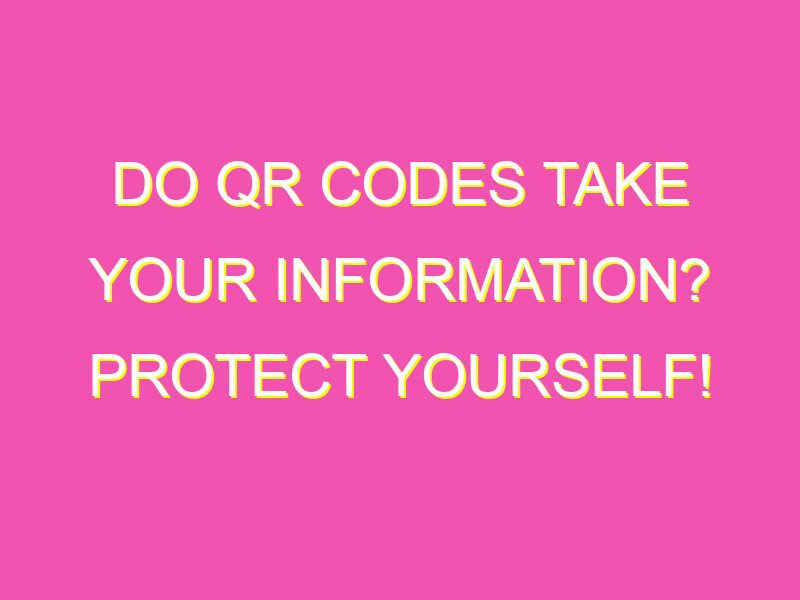QR codes are a powerful tool for providing information to customers quickly and easily. But beware! As with any tech, scammers are finding ways to exploit them. Here are three ways they can do it:
Make sure you only scan QR codes that you trust. Take a moment to examine the code and verify its legitimacy. Protect yourself with a QR code scanner app that has the security features you need. With these practices, you can safely enjoy the convenience of QR codes without getting caught in a scam.
QR codes and security concerns
QR codes are a useful tool in modern marketing and advertising, allowing businesses to provide quick and easy links to their online content. However, concerns have been raised around the potential security risks associated with QR codes being used as a tool for scammers to obtain personal or financial information.
While QR codes themselves do not directly take your information, they can be altered by scammers to redirect your click to a malicious website with the aim of stealing your data. Consumers should be cautious when scanning QR codes and take steps to protect their information from any potential scams.
How scammers can alter QR codes for malicious purposes
Scammers may use a variety of techniques to alter QR codes in order to obtain your personal data. In some cases, they may use a fake QR code placed over a real one, which redirects your click to a malicious website.
Another common tactic is to provide you with a QR code through email or text message, which is linked to a fake discount voucher or gift. Once the code is scanned, the scammer can obtain your personal information and use it for fraudulent activity.
The danger of fake QR codes placed over real ones
One of the most concerning techniques used by scammers is the placement of fake QR codes over legitimate ones. Consumers may scan the code believing it to lead to a safe website, but instead they are redirected to a malicious site.
Fake QR codes can be difficult to spot, but there are some precautions that consumers can take to protect themselves. Always check the quality of the code, ensuring that it is clear and free from any alterations or obstructions.
Beware of QR codes provided by email or text message
Scammers often use email or text message to provide consumers with QR codes linked to fake vouchers or gifts. These messages can seem legitimate and convincing, with the scammers often posing as a reputable company.
To protect yourself from these types of scams, be wary of any messages requesting personal or financial information, and always verify the source of the message before scanning any QR codes.
QR codes as a potential link to phishing scams
QR codes can also be used as a tool for phishing scams, in which scammers pose as a legitimate company or service to gain access to your personal information.
Consumers should always be cautious when scanning QR codes and take steps to protect their information, such as scanning the code with a safe browsing tool or verifying the source of the code before scanning.
How to protect your information from QR code scams
There are a number of steps that consumers can take to protect their information from QR code scams:
Verify the source: Before scanning any QR codes, verify the source of the code and ensure that it is from a legitimate source.
Use a safe browsing tool: It is important to use a safe browsing tool when scanning QR codes, as this can help to identify any potential hazards or malicious content.
Be cautious of email or text messages: Be cautious of any email or text messages that contain QR codes, and always verify the source before scanning.
QR code safety tips for consumers
In addition to taking specific steps to protect your information from QR code scams, there are a number of general safety tips that consumers should follow when using QR codes:
Check the quality of the code: Always check the quality of the code before scanning to ensure that it is clear and free from any alterations or obstructions.
Be wary of codes in public places: Be cautious of QR codes in public places, as they may redirect you to a malicious site.
Don’t input personal information: Never input personal or financial information when scanning a QR code, as this could be used for fraudulent activity.
By following these tips, consumers can protect themselves from potential QR code scams and enjoy the benefits of this useful technology without any security concerns.





